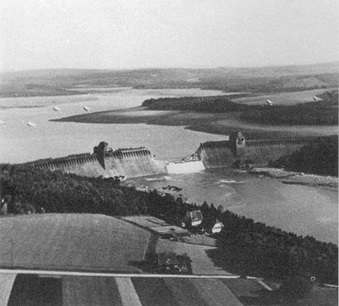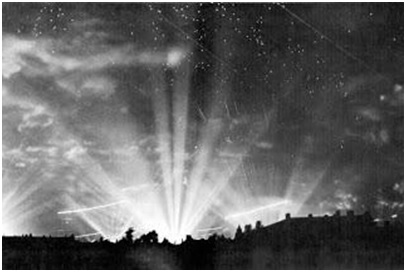
- For PC
- For MAC
- For Linux
- OS: Windows 10 (64 bit)
- Processor: Dual-Core 2.2 GHz
- Memory: 4GB
- Video Card: DirectX 11 level video card: AMD Radeon 77XX / NVIDIA GeForce GTX 660. The minimum supported resolution for the game is 720p.
- Network: Broadband Internet connection
- Hard Drive: 23.1 GB (Minimal client)
- OS: Windows 10/11 (64 bit)
- Processor: Intel Core i5 or Ryzen 5 3600 and better
- Memory: 16 GB and more
- Video Card: DirectX 11 level video card or higher and drivers: Nvidia GeForce 1060 and higher, Radeon RX 570 and higher
- Network: Broadband Internet connection
- Hard Drive: 75.9 GB (Full client)
- OS: Mac OS Big Sur 11.0 or newer
- Processor: Core i5, minimum 2.2GHz (Intel Xeon is not supported)
- Memory: 6 GB
- Video Card: Intel Iris Pro 5200 (Mac), or analog from AMD/Nvidia for Mac. Minimum supported resolution for the game is 720p with Metal support.
- Network: Broadband Internet connection
- Hard Drive: 22.1 GB (Minimal client)
- OS: Mac OS Big Sur 11.0 or newer
- Processor: Core i7 (Intel Xeon is not supported)
- Memory: 8 GB
- Video Card: Radeon Vega II or higher with Metal support.
- Network: Broadband Internet connection
- Hard Drive: 62.2 GB (Full client)
- OS: Most modern 64bit Linux distributions
- Processor: Dual-Core 2.4 GHz
- Memory: 4 GB
- Video Card: NVIDIA 660 with latest proprietary drivers (not older than 6 months) / similar AMD with latest proprietary drivers (not older than 6 months; the minimum supported resolution for the game is 720p) with Vulkan support.
- Network: Broadband Internet connection
- Hard Drive: 22.1 GB (Minimal client)
- OS: Ubuntu 20.04 64bit
- Processor: Intel Core i7
- Memory: 16 GB
- Video Card: NVIDIA 1060 with latest proprietary drivers (not older than 6 months) / similar AMD (Radeon RX 570) with latest proprietary drivers (not older than 6 months) with Vulkan support.
- Network: Broadband Internet connection
- Hard Drive: 62.2 GB (Full client)
From 06:00 GMT on 17th of May 2014 to 06:00 GMT on 19th May 2014
Operation (Ruhr) available in the Simulator Battles mode
Realistic battles event - "Guardian Angel"
Complete the following special missions and earn up to 150.000 Silver Lions
| While flying any aircraft of the USA, GB or USSR | While flying any aircraft of Germany or Japan |
|
Destroy 150 ground targets in Arcade Battles or 50 ground targets in Realistic Battles or 15 ground targets in Simulator Battles and earn 75 000 Silver Lions |
Destroy 80 enemy aircraft in Arcade Battles or 20 enemy aircraft in Realistic Battles or 10 enemy aircraft in Simulator Battles and earn 75 000 Silver Lions |

Mohne Dam Breached in operation Chastise
 The Battle of the Ruhr was begun on the 5th of March 1943 and lasted for 5 months, it was a campaign of strategic bombing during the Second World War against the German Industrial Ruhr Area, which had coke plants, steelworks, and synthetic oil plants. The campaign bombed twenty-six major Combined Bomber Offensive targets such as the Krupp armament works at Essen, the Nordstern synthetic-oil plant in Gelsenkirchen, and the Rheinmetall-Borsig plant in Düsseldorf. In this grand campaign, the famous Dambusters raid (Operation Chastise) was carried out on the 17th of May 1943.
The Battle of the Ruhr was begun on the 5th of March 1943 and lasted for 5 months, it was a campaign of strategic bombing during the Second World War against the German Industrial Ruhr Area, which had coke plants, steelworks, and synthetic oil plants. The campaign bombed twenty-six major Combined Bomber Offensive targets such as the Krupp armament works at Essen, the Nordstern synthetic-oil plant in Gelsenkirchen, and the Rheinmetall-Borsig plant in Düsseldorf. In this grand campaign, the famous Dambusters raid (Operation Chastise) was carried out on the 17th of May 1943.
British bomber aircraft involved in the Ruhr offensive was made up in the main of the twin-engined Vickers Wellington medium bomber and the four-engined Avro Lancaster, the Short Stirling and the Handley Page Halifax.
British raids were staged by night - the losses in daylight raids being too heavy to bear. RAF Bomber Command were using the Pathfinder squadrons and the bomber stream tactic together. The pathfinder group was made up mostly with Mosquito’s from 109 squadron.
 "Oboe", an electronic navigation aid using transponder radio technology meant the Pathfinders could mark the targets with flares despite the industrial generated haze and cloud cover that obscured the area by night. Guidance markers put the main force over the target area, where they would then drop their bomb loads on the target markers. The bomber stream concentrated the force of bombers into a small tight time slot, so effective that it overwhelmed fighter defences in the air and fire fighting attempts on the ground.
"Oboe", an electronic navigation aid using transponder radio technology meant the Pathfinders could mark the targets with flares despite the industrial generated haze and cloud cover that obscured the area by night. Guidance markers put the main force over the target area, where they would then drop their bomb loads on the target markers. The bomber stream concentrated the force of bombers into a small tight time slot, so effective that it overwhelmed fighter defences in the air and fire fighting attempts on the ground.
The USAAF had two 4-engined heavy bombers available: the B-17 Flying Fortress and the B-24 Liberator. The raids carried out by the American units were by daylight, the closely massed wings of bombers providing good cover for each other with defensive fire against fighters.
Between the Americans and the British, the systematic daylight and night time bombing gave the enemy little time to recover. The USAAF forces in the UK were still increasing during 1943 and the majority of the bombing was done by the RAF.
AA cover was so fierce that the British nicknamed the Ruhr as “The valley of no return!”
The Campaign seriously disrupted German war production and led to great shortages of steel and armaments which helped bring the end of the war closer.
The War Thunder Team




